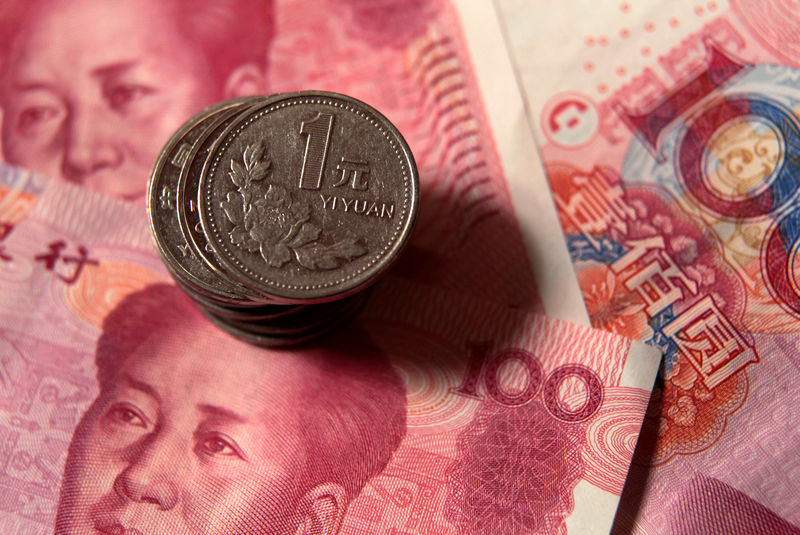By Ambar Warrick
Investing.com-- The Chinese yuan edged higher on Wednesday after data showed manufacturing activity shrank slightly less than expected in August, while most other Asian currencies tread water amid growing fears of a hawkish Federal Reserve.
The yuan rose 0.2% to 6.9012 to the dollar, recovering slightly from a two-year low hit this week. Government data showed on Wednesday that the manufacturing purchasing managers index (PMI) read 49.4, slightly above expectations of 49.2.
The yuan also benefited from a slightly stronger-than-expected daily midpoint fix by the People’s Bank of China, according to Reuters.
But while manufacturing activity was slightly better than expected, it still contracted for a second straight month in August, as a mid-year recovery appeared to be running out of steam.
China’s composite PMI, which gauges overall business activity in the country, also came in less than expected in August.
Slowing growth in the country indicates economic headwinds for the rest of Asia, given that several countries depend on China as an export destination.
But the Australian dollar rose 0.3% after Wednesday's data, given that it indicates some signs of recovery in the manufacturing sector. Australia is a major exporter of commodities to China.
Broader Asian currencies were muted, while the dollar index held around 20-year highs after stronger-than-expected U.S. jobs openings data heightened fears of a more hawkish Fed.
Strength in the jobs market gives the Fed more space to hike interest rates aggressively to tame inflation. Focus is now on upcoming U.S. nonfarm payrolls data, due on Friday, to gauge how hawkish the Fed can be at its next meeting.
Traders are pricing in a nearly 70% chance of a 75 basis point hike by the Fed during its September meeting.
The Japanese yen rose 0.2% on Wednesday, gaining more distance from the key 140 level after data showed retail sales grew more than expected in July. The data indicates that underlying consumption in the Japanese economy has persisted despite rising inflationary pressures.
In Southeast Asia, the Philippine peso rose 0.1% after producer price inflation grew in August from the prior month.
